Anyone who went through a Sourdough baking phase recently can attest: we’ve learned a lot about ourselves these past few years—both individually and collectively. 2021 returned us to a quasi-normal routine, but in moving forward we haven’t forgotten the lessons we’ve learned. After all, what are trials but catalysts for growth? What are tribulations but opportunities to learn? I’ve learned, for instance, to leave the baking to the professionals.
From social justice efforts to privacy demands, 2021 produced a noticeable evolution in online audiences across nearly every industry. Consumers have become empowered, and they’re using their influence to demand more from the brands they patronize.
Gone are the days of indiscriminate guerrilla marketing. Collectively, users have become more savvy; they’re quick to notice, call out, and disengage with brand-sponsored gimmicks and half-hearted platitudes. They want honesty in their ads, messaging in their marketing, and sincerity from the brands they sustain.
Well, the industry has listened. The following marketing trends of 2022, both in the destination marketing world and out, reflect a shift in the relationship between consumers and those vying for their attention. The gist: a little less town crier, a little more town hall.
Farewell to the Fence-Sitter
With the rise of social awareness and inclusivity in the digital space, it’s become imperative for brands to inquire, understand, and participate in the conversation. Studies have shown that younger Americans prioritize ethical matters when evaluating which brands or destinations to trust. As a result, consumers (and in our industry, meeting and event professionals) are using their cash, their clicks, and their clout to support the brands and destinations that align with their personal values.
And rhetoric only goes so far. Like anything of substance, it comes down to showing rather than telling. Our client, LA Tourism, partners with its city’s organizations on corporate social responsibility (CSR) initiatives that continue to bring the values of diversity, equity and inclusion (DEI) to the forefront of representation. One such initiative was the LACC Career Academy. And earlier this year, our team was more than eager to catapult the awareness of this and other dedicated initiatives coming out of the City of Angels through some online storytelling.
This trend will be especially noticeable in brands’ environmental stances. In PWC’s June 2021 Global Consumer Insights Survey, half of all participants reported becoming even more environmentally conscious than they were before the pandemic. The eco-friendly consumer is on the rise and brands will have to adapt and address their environmental impacts or risk losing a portion of their customer base.
Perhaps one of the most ardent destinations championing sustainable tourism is our client, Meet Hawaiʻi. Jesse Ashlock the US Editor in Chief for Condé Nast Traveler once said that “stewardship of the land is part of the intrinsic culture of Hawaiʻi. Every piece of the landscape has a story behind it and everyone here is a keeper of those stories.” In fact The Hawaiian Islands are some of the most ecologically diverse in a single location, so naturally, there’s a deep-rooted connection. But it’s the commitment of residents and visitors to supporting programs that protects this connection for generations to come
Historically, brands have aired on the side of caution rather than taking sides in controversial social debates. Why risk alienating a portion of your clientele when you could remain neutral? In 2022 and on, however, the risk will weigh heavier and heavier on the side of indecision. Consumers will patronize the brands and destinations who have put their mouths where their money is in shows of good faith.
Voice of the People
In the coming year, user-generated content will dominate the social feeds of brands across all industries. A Stackla survey has shown that 83% of consumers seek more authenticity from the brands and destinations they support. Peer-to-peer content has proven to produce that effect.
From simple retweets to high-effort TikTok challenges, we’ve watched user-generated content evolve over the years. Social media users prefer real content from real people. Brands and destinations that are able to identify and harness this content from their consumer-base will have a huge leg up in the coming year.
With 18.6M followers at the time of writing, brands like GoPro utilize consumer-generated content to great effect, sharing images and videos taken by GoPro users to drive engagement on social media.
Look for an uptick in user-based contests, challenges, and highlights. Brands are beginning to realize that their marketing efforts aren’t just about their goals, but their consumers’ goals as well. Our client Visit Rapid City’s most successful marketing campaign to date is one example of this symbiotic relationship: The Amazing Rush. The competition-based familiarization tour offers an original experience for planners—and user-based content in the form of testimonials and video footage only increases the momentum of the campaign each year, with some challenges requiring competitors to post live to their social feeds for additional destination exposure.
Service With a 😃
With increased demands from consumers comes an imperative for personalized customer support. A simple contact form for support requests will no longer cut it. Customers are demanding their issues be resolved in real time, and when that doesn’t happen brands and destinations are hearing about it. From chatbots to specialized social media accounts to Artificial Intelligence, brands are becoming more focused on resolving customer complaints quickly and to the satisfaction of their customers.
Brands like Spotify have resorted to creating a Twitter account specifically for customer support, resulting in quicker response times and an improved customer satisfaction. As a bonus, handling support inquiries on social media can be up to 12 times cheaper than handling them over the phone.
Additionally, a global study by Genesys and MIT Technology Review Insights has shown that, out of 600 executives for well known brands surveyed, 90% are utilizing Artificial Intelligence to improve customer experience. Rapid technological advancements in AI have made the technology cheaper and more efficient than ever before, which all but ensures its deployment by more and more smaller companies in 2022 and beyond.
A newly empowered pool of consumers are demanding their issues be resolved pronto. Expect a higher utilization of community-oriented outreach, transparency in support requests, and 24/7 availability from brands of all sizes and industries.
CVB’s like the Atlanta Convention & Visitors Bureau are already primed with that special touch from having navigated planners seamlessly and courageously through COVID.
Live From Your Screen, It’s 2022
Live streaming is poised to increase in popularity significantly over the coming years, with some expecting the industry to be valued at nearly $250 billion within the decade. This could explain why users spend approximately three times longer watching live video than they do pre-recorded video, as they want to be involved in brand-sponsored events rather than just observing them.
Consumer participation is an inherent quality of live streaming–a quality that has pushed the platform to be used by brands for many purposes beyond product announcements. From Q&As and interviews to live events and “backstage pass experiences”, live streaming will see a boom in 2022 as a further effort from brands to bring their supporters into the digital conversation and retain their attention for a longer period of time.
Many of our clients have leveraged live virtual FAMs with incredible success and engagements, including this example by Experience Grand Rapids.
We’re All In This (Room) Together
During the pandemic, brands and destinations were forced to adapt quickly to an altered version of the events they would normally host in person. This created a huge push for hybrid and mixed-reality events. Further, major companies such as Facebook Inc. (newly renamed Meta to mixed reviews) back the trend, with Meta recently investing $50 million on research for their metaverse.
There is a litany of benefits to hosting mixed-reality events, many of which align with the consumer-participation strategy many companies will be leaning toward in 2022. Mixed-reality is inclusive to those with disabilities, affordable for “attendees”, and environmentally responsible. 2022 will almost certainly further the appreciation of mixed-reality in marketing from both brands and consumers.
Philanthropic Forays
A report from Accenture shows that 50% of consumers prefer brands that support and act upon causes they have in common. This presents an intriguing opportunity for brands to partner with nonprofits to not only gain exposure and increase trust in their consumers, but to support philanthropic efforts as well.
While this marketing strategy is far from new, heightening consumer sentiment for brand participation in the charitable sphere indicates that nonprofit partnerships will be on the rise in 2022. Specifically, brands who share a target audience with specific causes will be likely to jump on the trend and use their resources to gain trust.
As mentioned earlier, LA is on the forefront, incorporating a massive corporate social responsibility effort whereby they “act as the link between meeting planners who want to make a meaningful impact and a diverse group of organizations that are addressing the most pressing issues of [their] community.”
Looking to the Future
With significant cultural change comes an imperative for brands and destinations to alter the way they relate to consumers. The past few years have bolstered skepticism in the cultural zeitgeist and companies are taking notice. In 2022, brands will be more conversational and less proclamatory in their marketing in an attempt to earn the trust and respect of the marketplace. Moreover, selflessness in marketing will grow in popularity as brands focus more of their efforts toward philanthropic and social endeavors.
Certain major brands (who will remain nameless because, well, who knows what they’ll be called next week) have instilled a justified wariness in online consumers over the past half-decade. Now, consumers are demanding brands across all industries earn their trust before earning their money, and this pendulum will likely retain its backswing for the foreseeable future.
*Merriam-Webster be damned.







